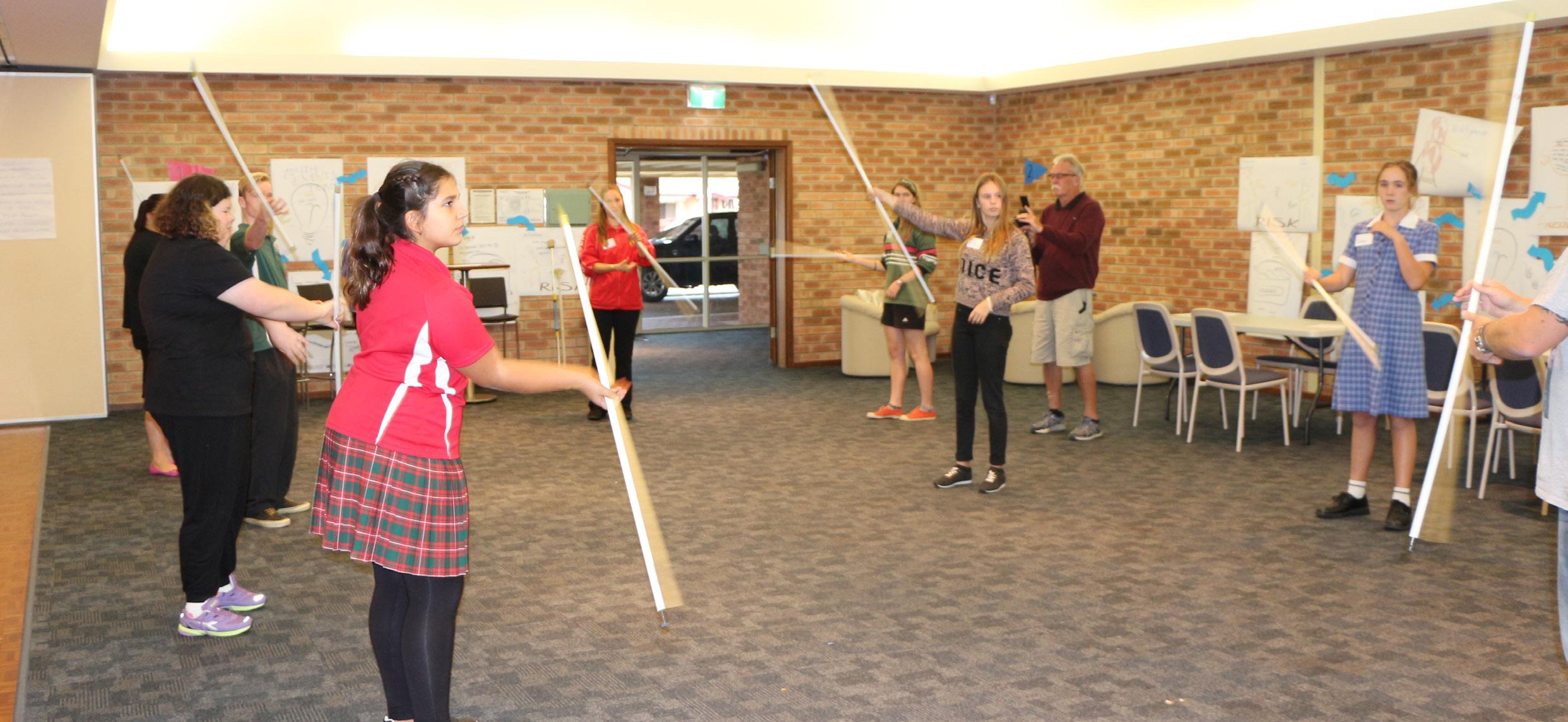
4 minute read
Community Youth Proile
Community Youth ProFile
Below provides a brief statistical summary about the young people in the Shire of Esperance ‘Urban Centre-Locality’ as provided by the Australian Bureau of Statistics. With the exception of the table at the bottom of this page, all statistics were from the 2011 Census, whereby the table includes 2001 and 2006 Census information.
Note: while the accuracy of the Census statistics could be questioned it is not the intent of this report to do so and information is provided as a general overview only.
Population
• The defined region’s overall population was 9919 (48.9% male and 51.1% female) with the
Indigenous population representing 4.5%. Young people represent 18.933% of the population, almost one fifth. • Comparing the age population of young people against the state the average, the defined region had 1.4% more for the 10 to 14 age group (7.9% compared to 6.5% [WA] respectively); 15 to 19 years had 0.8% + (7.4% to 6.6%[WA]); however 20 to 24 year olds was 1.7% below the WA state average (5.4% to 7.1%[WA])
The table below looks at the population of each youth year and how these have changed over a ten year period; includes the years of 2001, 2006 and 2011.

Number of young people
• 1878 young people in 2011 • 15 to 24 years - 97 visitors (7.662%) on Census Night not from Esperance Urban Centre.
Relationship Status
Age Group Registered Marriage Defacto Marriage Not Married
15 - 19 years 0.489% 4.072% 95.44% 20 - 24 years 9.051% 29.581% 61.369%
Indigenous and Non-Indigenous
Age Group Indigenous Not Indigenous Not Stated 10 - 14 years 8.067% 85.147% 6.786% 15 - 19 years 6.351% 86.351% 7.297% 20 - 24 years 6.916% 86.729% 6.355%
Education
• Of 632 secondary students 92.247% attended government schools (92.247%) and 7.753% attended non-government schools (excluding Catholic) • 15 to 24 years at Tech or Further education – 11 Full-time and 68 Part-time students • 15 to 24 years at University or other tertiary Institution – 15 Full-time and 9 Part-time students
Highest Year of School completed (must no longer be attending school to respond)
Age Groups/ School Year Year 12 Year 11 Year 10 Year 9 Did not go to school Not stated
15 - 19 years 40% 22.078% 20% 3.636% - 14.286% 20 - 24 years 49.438% 19.663% 17.978% 2.434% 0.562% 9.925%
Personal Weekly Income
Personal Income/Age 15 - 19 years Negative/Nil income $1-$199 $200-$299 $300-$399 $400-$599 $600-$799 $800-$999
26.622%; 27.973%; 7.297%, 7.027%; 12.703%, 3.378%, 1.486%
$1,000-$1,249 $1,250-$1,499 $1,500-$1,999
0.405%.
$2,000 or more
0.405%.
20 - 24 years
2.06%; 6.554%; 8.989%; 6.554%; 17.978%; 19.85%; 11.236%; 7.303%; 4.869%; 2.996% 2.434%. 9.176% 39
Voluntary work for an organisation or group Age/Volunteer Volunteer Not a Volunteer Not stated
15 – 19 years 18.893% 68.826% 12.281% 20 – 24 years 16.075% 75.14% 8.785%
Unpaid assistance to a person with a disability Age/Unpaid Assistance Provided Unpaid Assistance No unpaid assistance provided Unpaid assistance not stated
15 – 19 years
3.378% 20 – 24 years 4.299% 83.784% 86.916% 12.838% 8.785%
Number of children ever born by age of parent Age/ No. of children No Children 1 child 2 children 3-4 children
5+ children Not stated
15 – 19 years 87.335% 3.166% - - 1.055% 8.443% 20 – 24 years 64.539% 13.475% 11.348% 2.128% - 8.511%
Non-School Qualification: Level of education by gender for 15 to 24 years
Age Certificate No further description Certificate I/II Certificate III/IV Diploma/ Adv. Diploma Bachelor’s Degree Inadequately described/ Not Stated
15 – 24 years 4.338% 41.324% 12.785% 4.338% 6.393% 30.822%
Non-School Qualification: Field of Study by gender for 15 to 24 years
Field of Study Males Females
Engineering and related Technologies 33.488% Architecture and Building 17.209% Agriculture, Environment and Related Studies 5.116% 4.505% Society and Culture 3.256% 9.91% Food, Hospitality and Personal Services 3.256% 18.919% Creative Arts 2.791% 4.955% Management and Commerce 1.86% 20.721% Field of Study not stated/inadequately described 33.023% 28.829% Health - 6.757% Education - 5.405%
Labour Force Status by age Labour Force Status / Age Employed, worked: Full-time(a)
15 – 19 years 20 – 24 years 19.73% 47.191%
Employed, worked: Part-time Employed, away from work(b)
28.784% 17.228% 2.838% 3.558% Hours worked not stated 1.216% 2.809% Unemployed, looking for: Full/Part-time work 6.486% 5.993% Not in the labour force 34.054% 15.543% Labour force status not stated 6.892% 7.678%
Industry of Employment by age Industry / Age Agriculture, forestry and fishing Manufacturing Construction Wholesale trade Retail Trade 15 – 19 years 20 – 24 years
2.296% 1.061% 6.633% 8.488% 11.224% 11.406% 3.316% 4.775% 27.296% 15.119%
Accommodation and Food Services Transport, Postal and Warehousing Education and Training Health Care and Social Assistance Mining Public administration and safety Financial and insurance services
22.449% 9.284% 3.061% 5.04% 0.765% 3.316% 2.806% 5.836% 0.765% 4.244% 2.551% 3.448% 0.765% 3.448% Arts and Recreation Services 1.531% 1.061% Information Media and Telecommunications 1.531% 2.918% Rental, Hiring and Real Estate Services 2.041% 0.796% Professional, scientific and technical services 1.02% 1.857% Electricity, gas, water and waste services - 0.796% Other Services 7.398% 10.345% Inadequately Described/Not Stated 1.531% 2.387%
Occupation by age Occupation / Age Managers Professionals Technicians & Trades workers Community & Personal Service workers Clerical & Administrative workers Sales workers Machinery Operators and drivers Labourers Inadequately Described/Not Stated 15 – 19 years 20 – 24 years
2.036% 5.319% 1.272% 9.309% 20.865% 27.66% 10.941% 10.638% 7.379% 10.106% 32.824% 14.894% 1.781% 6.383% 21.628% 15.691% 1.272% -






